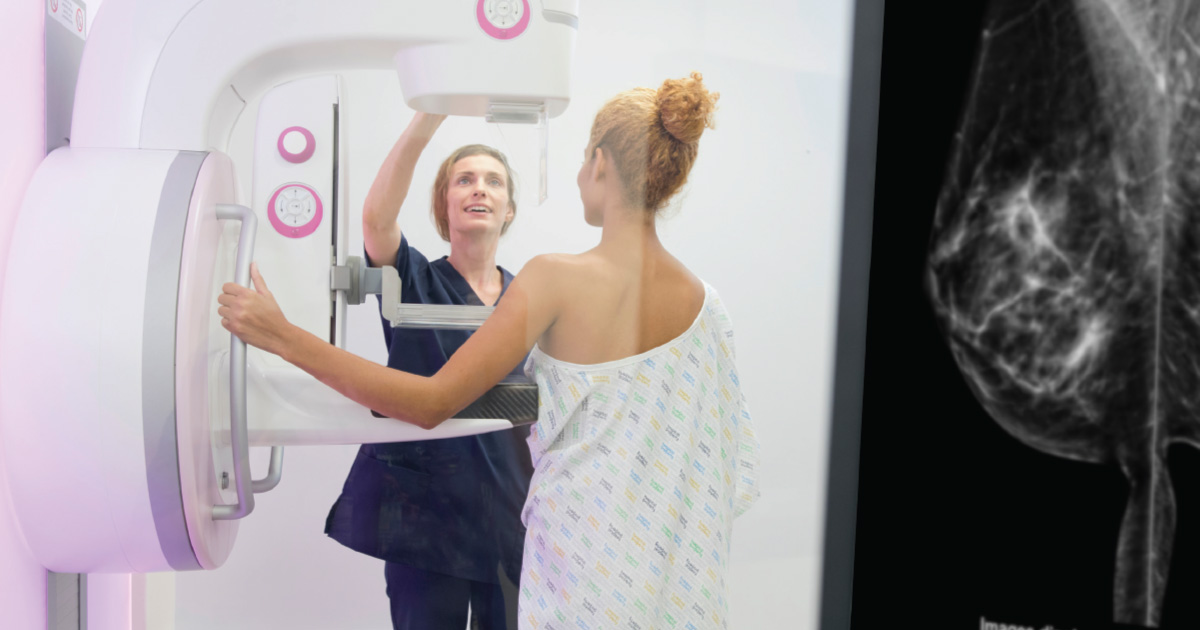
Breast Health
Mammograms: Understanding The Different Types
Mammograms are a powerful tool for early breast cancer detection, allowing you to detect any abnormal changes in your breast tissue at an early stage. Did you know there are different kinds of mammograms? In this article, we’ll explore the different types of mammograms, their benefits, and what you can expect during the screening process.
What’s a Screening Mammogram?
A screening mammogram is a routine X-ray exam of the breasts used to detect breast cancer long before symptoms appear. The primary goal is to find cancer early when it is most treatable.
Advancements in technology have led to the development of newer methods of screening mammography. Women now have more accurate, effective options than ever before. Two standout screening options are 3D mammography and Automated Breast Ultrasound (ABUS).
3D Mammography (Digital Breast Tomosynthesis)
3D mammograms are largely viewed as the gold standard in screening and have many added benefits when compared to previous 2D mammogram technology. This innovative approach involves taking multiple images from various angles, essentially creating a “slice by slice” view of the breast tissue. These images are processed by a computer to create a comprehensive 3D image, allowing for a more detailed examination. This technology helps to reduce the number of false positives and can detect smaller cancers that may be missed with 2D mammograms.
Overall, 3D mammograms provide more accurate detection and may lead to fewer callbacks for additional tests. They are suitable for almost all women, making them a preferred option in many facilities.
Automated Breast Ultrasound (ABUS)
Automated Breast Ultrasound is a valuable tool for women who have dense breast tissue and those who have breast implants. An estimated 40% of women have some level of dense breast tissue, which can increase the risk of missing early cancer detection. This is why additional imaging is often necessary. ABUS is a noninvasive, painless technology that uses sound waves to create detailed images of the breast, allowing for a more thorough examination of denser tissue.
ABUS is often recommended in conjunction with a 3D mammogram, providing a more comprehensive view of breast health. If you have dense breasts, discussing the benefits of ABUS with your healthcare provider can help ensure that you receive the most effective screening.
What About Diagnostic Mammograms?
A diagnostic mammogram is a more in-depth imaging procedure typically ordered when a screening mammogram reveals an abnormality. Unlike screening mammograms, which are routine checks, diagnostic mammograms focus on specific areas of concern. This procedure uses the same technology as a screening mammogram but involves a different approach, often requiring additional x-rays from various angles to closely examine a particular spot. This thorough examination can provide crucial information about any abnormalities.
Choosing the Right Mammogram for You
Wondering which type of mammogram is best for you? It really depends on several factors, including your age, breast density, and personal health history. Your doctor can help you determine what’s best for your situation.
When Should You Get a Mammogram?
In general, many organizations—including the United States Preventive Services Task Force and the American College of Obstetricians and Gynecologists—recommend that women begin annual screening for breast cancer starting at age 40. Medicaid, Medicare, and most commercial insurance companies typically cover the entire cost of screening mammograms for women aged 40 and over.
While you can get a mammogram at any time, some women may find it more comfortable to schedule 1-2 weeks after their period to avoid any added breast sensitivity or soreness.
How Should You Prepare For a Mammogram?
When preparing for your mammogram, avoid wearing any scented lotions, powders, perfumes or deodorants on the day of your appointment as they can impact results. While there are no clothing restrictions, you may prefer to wear a top and bottom versus a one-piece outfit, as you typically only need to disrobe from the waist up. The appointment should take about 30 minutes. After your appointment, a radiologist will read and interpret your results. Result times may vary, but your care center can provide an estimate as to when you should expect to hear back.
The Role of Self-Exams
Along with regular mammograms, don’t forget to perform self-exams at home. No one knows your body better than you do! With regular self-breast exams, you can keep up with how your breasts look and feel normally and be on the lookout for any unusual changes. Here’s a helpful guide on 5 steps to completing a self-breast exam. The best time to complete a self-exam is right after your menstrual cycle.
Take The Next Step In Caring For Your Breast Health
Remember: Early detection is key in the fight against breast cancer. If you haven’t yet scheduled your annual mammogram, don’t delay. Mammograms can save lives by finding cancer in its earliest stages when it is most treatable.
At Axia Women’s Health, we are dedicated to supporting you in making caring for your breast health as convenient as possible. We are happy to conveniently offer mammography services in the comfort of many of our care centers. Your health is our priority—schedule your appointment today!








